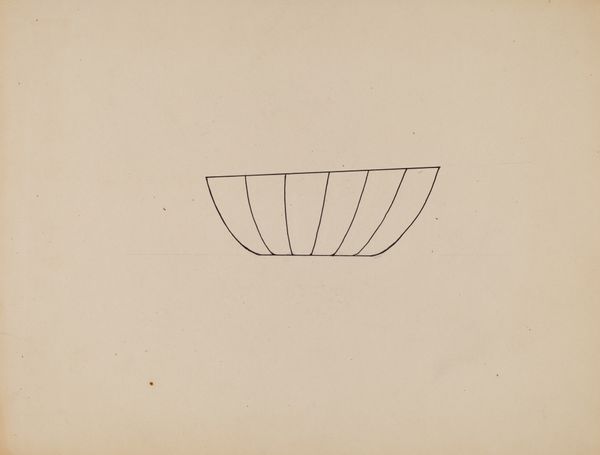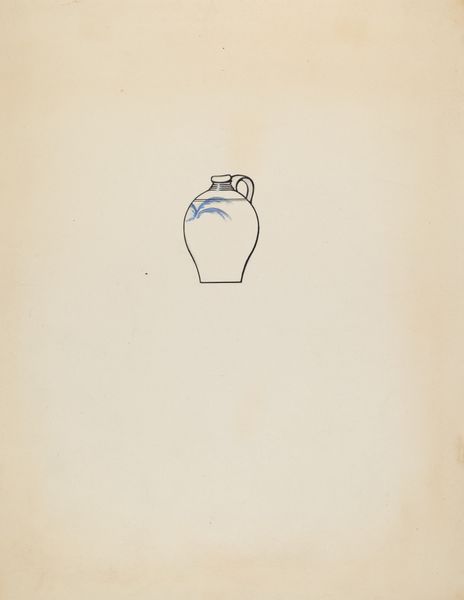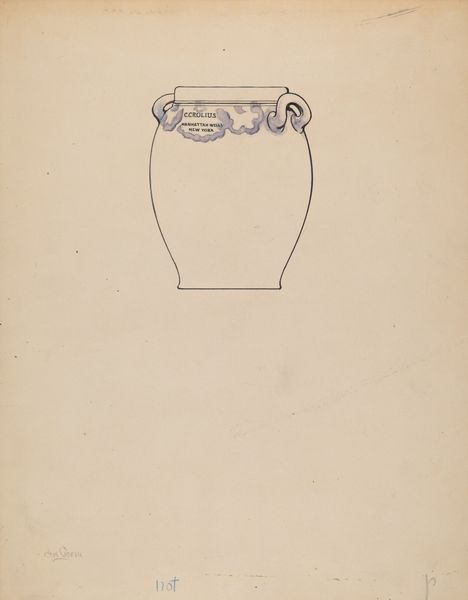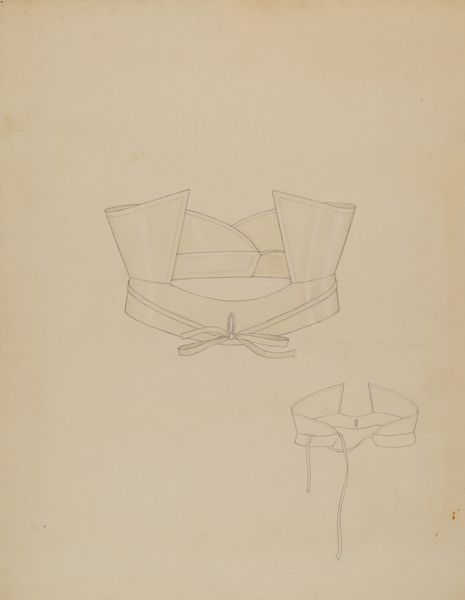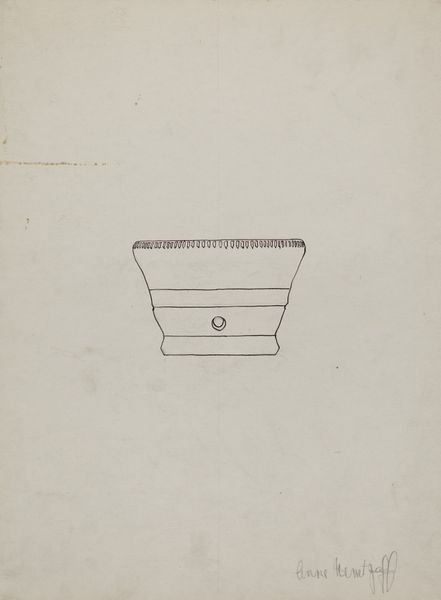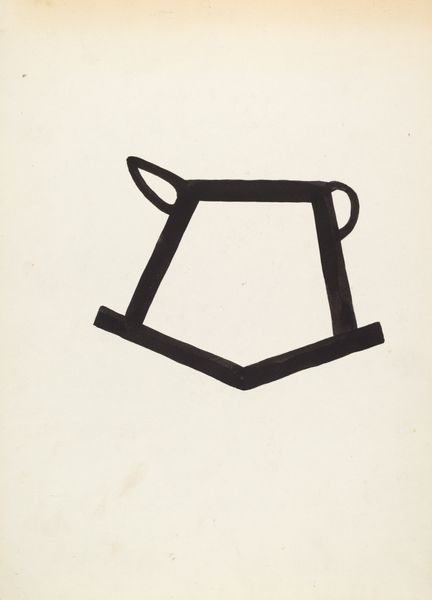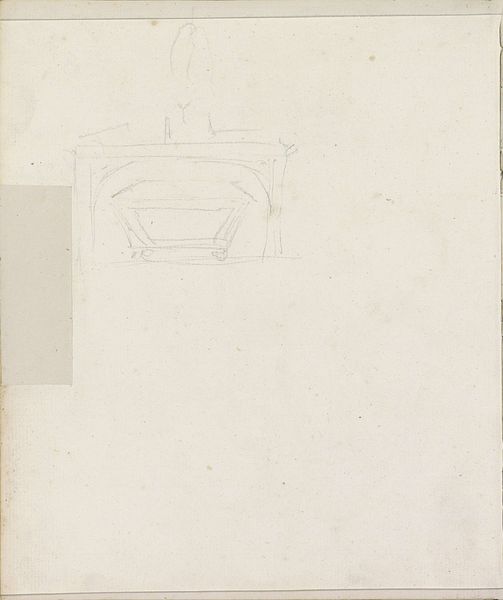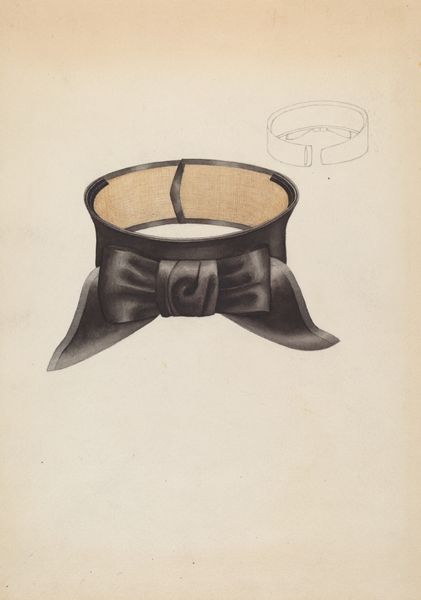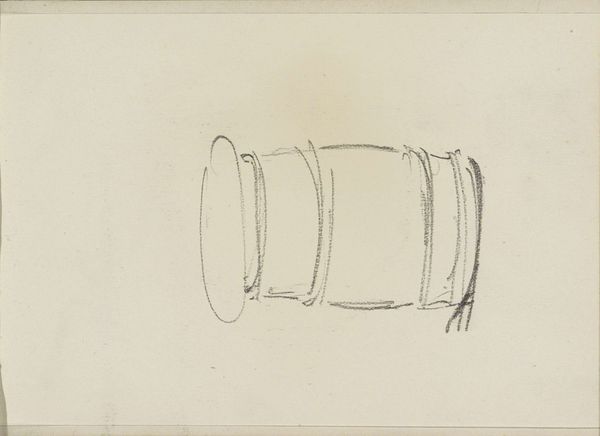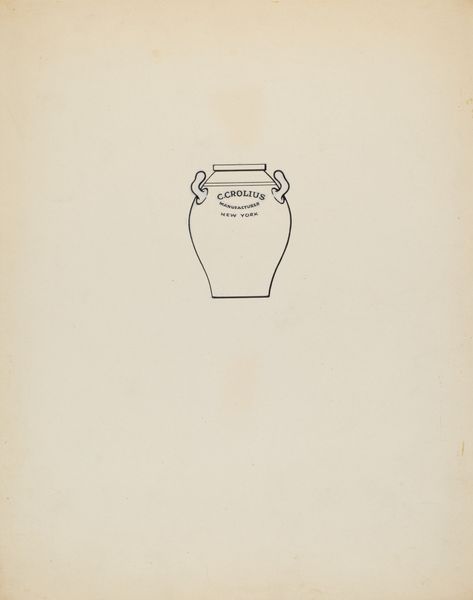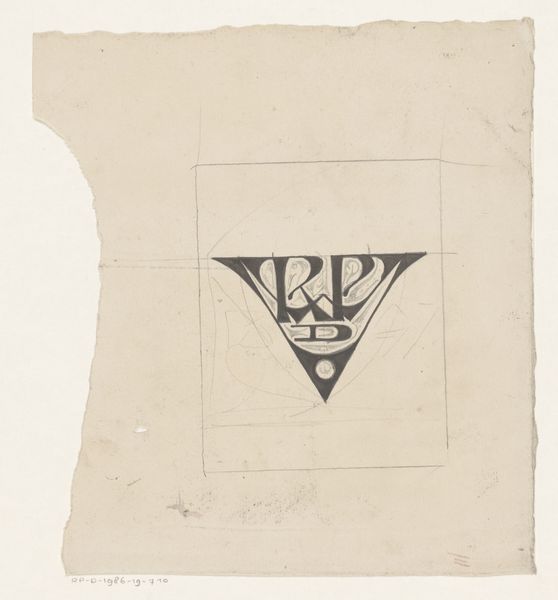
drawing, paper, pencil
#
drawing
#
paper
#
geometric
#
pencil
Dimensions: overall: 27.9 x 22.7 cm (11 x 8 15/16 in.)
Copyright: National Gallery of Art: CC0 1.0
Curator: Here we have Edna Rex's "Knee Buckle," a pencil drawing on paper dating to around 1937. It's a seemingly simple study, yet potentially rich in social commentary if we dig a bit deeper. Editor: It's quiet, almost hushed. The buckle rendered so delicately… like an echo of something once gleaming and ornate now reduced to a ghostly trace. There's a palpable sense of absence to it. Curator: Absence perhaps mirroring the time? During the late 30s, fashion shifted drastically. Utility and austerity took precedence, partly as a response to the economic hardships of the Great Depression. This could be interpreted as a subtle commentary on those changes. The knee buckle was once an indicator of status and extravagant consumption. Editor: The rendering emphasizes the materiality of the buckle, too. You see the almost hesitant pencil strokes suggesting its form and also maybe evoking a sense of craft, of the hand. Its isolation on the page isolates those elements further. Curator: Absolutely. Edna Rex's work often depicted ordinary, functional objects—artifacts of everyday life. Museums were beginning to champion such subjects. Consider also how the Federal Art Project was employing artists to create images that documented American life during this period. So her decision to represent something like this, even in a refined manner, elevates the everyday. Editor: Makes you think about who made it, too, right? How were these things manufactured? The division of labor. The consumption practices around adornment. Curator: Precisely. The image carries all these socio-economic undertones beneath a surface of minimalist presentation. How fashion reflects social conditions... how taste transforms labor. And a piece like this, so subtly executed, allows space to meditate on these deeper layers. Editor: It really highlights how humble materials, like pencil and paper, can represent an object with such lingering power. I'm drawn to the almost forensic quality of the draftsmanship itself. Curator: Indeed, a quiet drawing speaking volumes about its place, its time. Editor: A material record offering broader insights.
Comments
No comments
Be the first to comment and join the conversation on the ultimate creative platform.
